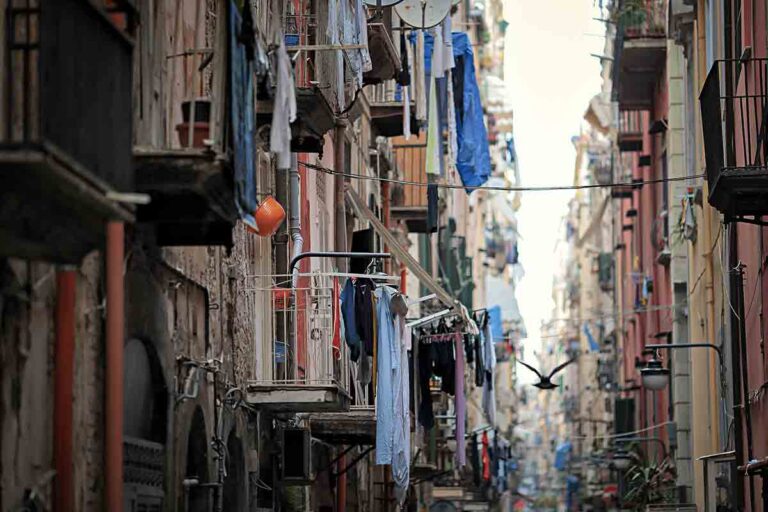
The path on social impact innovation began with the vision of very few, now several years ago, when it seemed only an abstract and even unrealistic formula.
Today, however, it seems that everyone has discovered themselves as social innovators: banks, companies, philanthropists. As if a fashion had broken out from which no one wants to stay out. Some mistrust, therefore, is inevitable and, indeed, necessary. Especially when it turns out that the flag of social impact innovation in Italy is often represented by the same people who have always occupied privileged positions and who, in their lives, have mostly done so while sitting comfortably in the living room.
Exactly as intuited and ironically represented in the film "Like a cat on the ring road", in particular in the scene in which Paola Cortellesi, who "was" the social one, finds herself the only one with clogs, an out-of-place guest of courteous but somewhat ' snobs, who, strictly barefoot, discuss maximum systems sitting in front of the sea of Capalbio.
On the other hand, however, the sometimes hostile attitude shown on social impact by some voluntary associations is not justified, in which charismatic founders and simple volunteers stiffen even just hearing about finance. As if money were a dirty thing and as if, after all, the money that they themselves accept as a donation for the worthy activities carried out was not money.
Innovation with a social impact, on the other hand, is a theme that invites everyone to confront each other, because it can mark a revolution in the approach to social and economic policies, to be thought of no longer separately, but as an integral part of the other. A necessary revolution in the face of the progressive lack of available resources, on the one hand, and the exponential growth of the number of poor people, on the other.
To clarify things, it must be said, first of all, that today Italy is trying to implement social innovation, but not innovation with a social impact. And that word – impact – really makes the difference. The boundaries of poverty, in fact, as well as social exclusion and degradation of the suburbs, are so extensive today that it is no longer enough to intervene on a single emergency.
Rather, it is necessary to think about and experiment with interventions which, for example, addressing the issue of poverty, create opportunities for wealth with new jobs, revitalize abandoned public buildings, bring businesses and people back to degraded and insecure neighbourhoods.
This is the difference that the word "impact" can make: broaden the effects of a social project, so that they affect not only a category of citizens and discomfort, but bring direct and indirect benefits to the whole community.
As is evident, these are projects that are certainly complex, if not difficult, both because they take years and because they involve many subjects: public institutions, private non-profits, private profits, financial institutions, evaluators.
However, it is worth trying, if you don't want to remain closed within the increasingly narrow confines of non-repayable donations, which are important, but which lead not far: public or private money that is barely enough to renovate yet another roadman's house , open its doors with smiling volunteers, snatch a few newspaper headlines, and then, after a few years, find yourself witnessing the new decline of the property due to lack of new resources.
For this not to happen, it is no longer enough just to talk about it. On the contrary, the uncoordinated and self-referential swarm of events, newspaper articles, courses and schools has become decidedly intolerable, which has invaded the theme of social impact and the fight against poverty.
In fact, the gap between those who continue to organize events and those who struggle every day with yet another desperate person knocking on the door is evident: the former who think they can teach the latter and vice versa. While it is clear that both contributions are essential as long as they learn to intertwine.
There have become too many who only offer to model innovative projects without wanting to be part of them: in a few years, perhaps, it will be possible, but not now. Now we're still at the abc. We are at the stage where projects must be built together, those who theorize and those who put them into practice. You cannot sit at your desk evaluating initiatives that are being implemented in the field.
Later, only later, will the roads stand out, but now is the time when everyone should get their hands dirty, starting with local projects, strongly rooted in the territories, so that the innovativeness of the impact approach enters the culture and everyday life of everyone. The national dimension of the projects will also come later. After that small experimentation that must be done with the intention of making it replicable and, then yes, brought to a national scale.
In Tuscany we are trying to do it, with effort and determination, also thanks to the Third Sector Reform: the Tuscany Region, Caritas, the Ethics Foundation, Confindustria, a bank and now also the Italia Sociale Foundation.
It took us two years of work just to get us all together around the same table, on the same project, to create a local promoting committee and, above all, to agree on the desire to innovate the way of doing social things, transforming the regeneration of a disused regional building also of economic development. We are not aiming for the umpteenth best practice, but for a positive contamination in the country.





